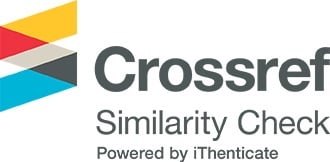Các nhân tố ảnh hưởng đến việc công bố thông tin tại Việt Nam: Tiếp cận từ mô hình dynamic GMM
Các tác giả
DOI: https://doi.org/10.59294/HIUJS.34.2025.752Từ khóa:
mức độ công bố thông tin, VN-100, các yếu tố ảnh hưởngTóm tắt
Nghiên cứu này tìm hiểu các yếu tố tác động đến mức độ công bố thông tin trên thị trường chứng khoán Việt Nam với các nhóm yếu tố đo lường gồm: Nhóm yếu tố đặc điểm công ty, nhóm yếu tố hiệu quả hoạt động, yếu tố loại công ty kiểm toán, nhóm yếu tố về quản trị công ty và chỉ số dự báo kiệt quệ tài chính. Nghiên cứu sử dụng mô hình GMM động để phân tích, đánh giá và đo lường ảnh hưởng của các yếu tố đến mức độ công bố thông tin của doanh nghiệp. Kết quả nghiên cứu cho thấy hầu hết các yếu tố đều có tác động đến mức độ công bố thông tin. Mức công bố thông tin cao nhất đạt được là 106/118 điểm, tương ứng 89.83%. Bên cạnh đó, nghiên cứu này cũng cho thấy mức độ công bố thông tin cũng có tương quan cùng chiều với mức độ công bố thông tin trong quá khứ.
Abstract
This study examines the factors influencing the level of information disclosure by listed companies on the Vietnamese stock market, categorized into groups of measurement factors, including company characteristics, operational performance, audit firm type, corporate governance, and financial distress prediction indices. This study employs a dynamic Generalized Method of Moments (GMM) model to analyze, evaluate, and measure the impact of these factors on the level of information disclosure. The findings reveal that most factors significantly influence information disclosure levels. The highest information disclosure level achieved was 106/118 points, equivalent to 89.83%. Furthermore, the study indicates that the level of information disclosure is positively correlated with the disclosure levels of prior periods.
Tài liệu tham khảo
[1] P. Adina and P. Ion, “Aspects regarding corporate mandatory and voluntary disclosure,” Ann. Univ. Oradea Econ. Sci., vol. 3, no. 1, pp. 1407-1411, 2008.
[2] S. Nandi and S. Ghosh, “Corporate governance attributes, firm characteristics and the level of corporate disclosure: Evidence from the Indian listed firms,” Decis. Sci. Lett., vol. 2, no. 1, pp. 45- 58, 2012. Doi: 10.5267/j.dsl.2012.10.004.
DOI: https://doi.org/10.5267/j.dsl.2012.10.004[3] A. R. Cerf, “Corporate reporting and investment decisions,” Public Account. Res. Program, 1961.
[4] C. A. Botosan, “Disclosure level and the cost of equity capital,” Account. Rev., vol. 72, no. 3, pp. 323-349, 1997.
[5] G. Bueno, R. Marcon, A. L. Pruner-da-Silva, and F. Ribeirete, “The role of the board in voluntary disclosure,” Corp. Gov. Int. J. Bus. Soc., vol. 18, no. 5, pp. 809-838, 2018. Doi: 10.1108/CG-09-2017- 0205.
DOI: https://doi.org/10.1108/CG-09-2017-0205[6] M. C. Jensen and W. H. Meckling, “Theory of the firm: Managerial behavior, agency cost and ownership structure,” J. Financ. Econ., vol. 3, pp. 305-360, 1976.
DOI: https://doi.org/10.1016/0304-405X(76)90026-X[7] M. Spence, “Job market signaling,” in Uncertainty in Economics, Elsevier, 1978, pp. 281-306.
[8] P. M. Healy and K. G. Palepu, “Information asymmetry, corporate disclosure, and the capital markets: A review of the empirical disclosure literature,” J. Account. Econ., vol. 31, no. 1-3, pp. 405-440, 2001. Doi: 10.1016/S0165-4101(01)00018-0.
[9] S. C. Myers, “Determinants of corporate borrowing,” J. Financ. Econ., vol. 5, no. 2, pp. 147-175, 1977. Doi: 10.1016/0304-405X(77)90015-0.
[10] A. Alnabsha, H. A. Abdou, C. G. Ntim, and A. A. Elamer, “Corporate boards, ownership structures and corporate disclosures: Evidence from a developing country,” J. Appl. Account. Res., vol. 19, no. 1, pp. 20-41, 2018. Doi: 10.1108/JAAR-01-2016-0001.
DOI: https://doi.org/10.1108/JAAR-01-2016-0001[11] A. Sharma and S. Rastogi, “Impact of efficiency on voluntary disclosure of non-banking financial company microfinance institutions in India,” J. Risk Financ. Manag., vol. 14, no. 7, p. 289, 2021. Doi: 10.3390/jrfm14070289.
DOI: https://doi.org/10.3390/jrfm14070289[12] N. L. V. Thanh, Các nhân tố ảnh hưởng đến mức độ công bố thông tin trên báo cáo thường niên của các công ty niêm yết trên sở giao dịch chứng khoán Việt Nam – ngành hàng tiêu dùng, Trường Đại học Kinh tế TP. Hồ Chí Minh, 2019.
[13] H. T. C. Thơ, T. K. Nga,… và N. H. Thanh, “Yếu tố ảnh hưởng đến mức độ công bố thông tin trong báo cáo tài chính của các công ty ngành bất động sản niêm yết trên thị trường chứng khoán Việt Nam,” Tạp chí Nghiên cứu Khoa học và Phát triển Kinh tế Trường Đại học Tây Đô, vol. 10, pp. 134- 157, 2020.
[14] L. T. H. Duyên, Các nhân tố ảnh hưởng đến mức độ công bố thông tin của các công ty niêm yết tại Việt Nam, Trường Đại học Kinh tế Thành phố Hồ Chí Minh, 2022.
[15] B. G. Tabachnick and L. S. Fidell, Experimental designs using ANOVA, vol. 724. Thomson/Brooks/Cole Belmont, CA, 2007.
[16] C. A. Otto, “CEO optimism and incentive compensation,” J. Financ. Econ., vol. 114, no. 2, pp. 366-404,2014.Doi: 10.1016/j.jfineco.2014.06.006.
DOI: https://doi.org/10.1016/j.jfineco.2014.06.006[17] P. Hribar and H. Yang, “CEO overconfidence and management forecasting,” Contemp. Account. Res., vol. 33, no. 1, pp. 204-227, 2015. Doi: 10.1111/1911-3846.12144.
DOI: https://doi.org/10.1111/1911-3846.12144[18] E. I. Altman and E. Hotchkiss, Corporate financial distress and bankruptcy: Predict and avoid bankruptcy, analyze and invest in distressed debt, vol. 289. John Wiley & Sons, 2010.
[19] D. Roodman, “How to do xtabond2: An introduction to difference and system GMM in Stata,” Stata J., vol. 9, no. 1, pp. 86-136, 2009. Doi: 10.1177/1536867X0900900106.
DOI: https://doi.org/10.1177/1536867X0900900106Tải xuống
Tải xuống: 58











